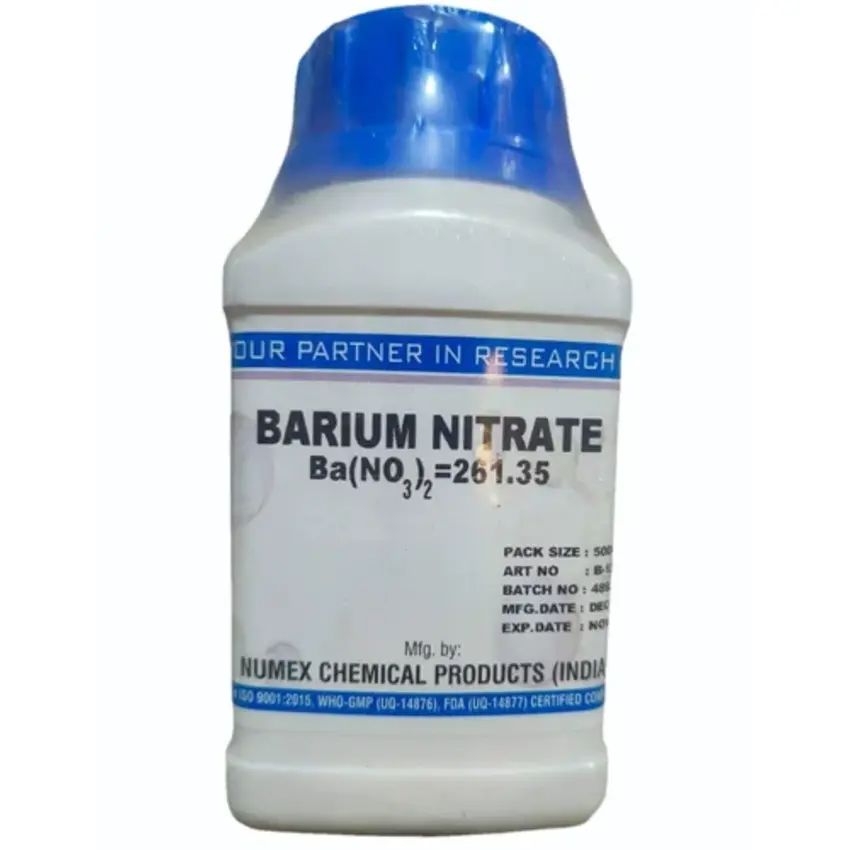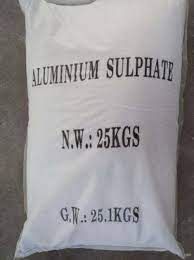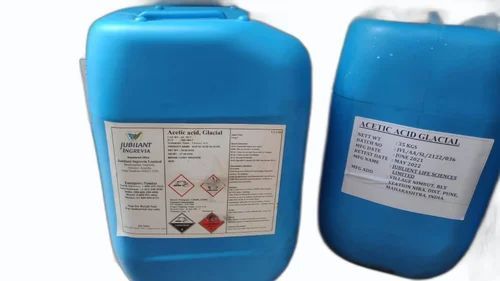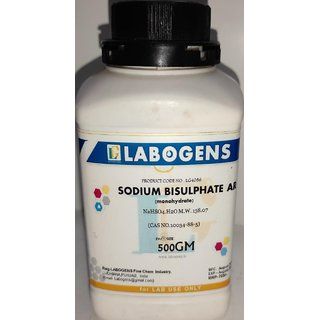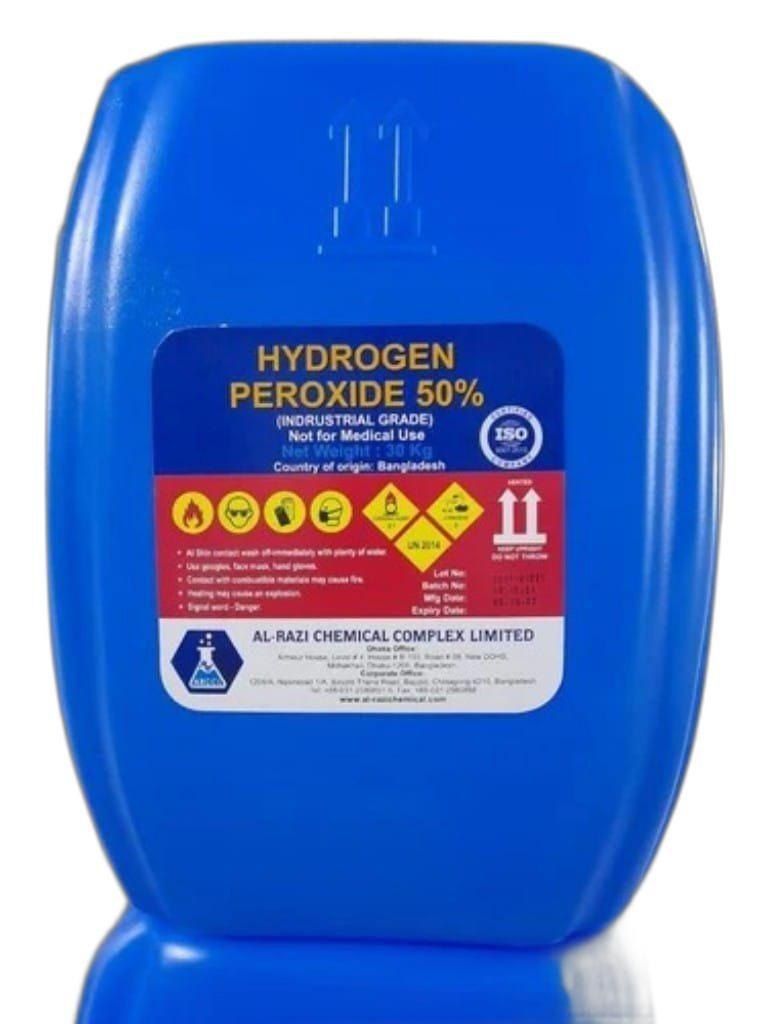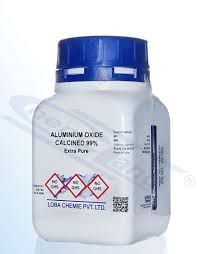Barium Nitrate is a white crystalline solid widely used in pyrotechnics, explosives, chemical synthesis, and laboratory applications. It acts as an oxidizer, providing oxygen to enhance combustion in pyrotechnic formulations and specialized chemical processes.
Chemical Details:
- Chemical Name: Barium Nitrate
- Chemical Formula: Ba(NO₃)₂
- Molecular Weight: 261.34 g/mol
- Purity: Technical or Extra Pure grades available (≥99%)
- Appearance: White crystalline powder or granules
- Odour: Odourless
- Solubility: Soluble in water, insoluble in alcohol
- Density: ~3.24 g/cm³
- Melting Point: 592°C (decomposes)
Key Features:
- Strong oxidizing agent suitable for pyrotechnic and explosive formulations
- Produces a green flame in fireworks and flares due to barium ions
- High purity for reliable performance in laboratory and industrial applications
- Stable under recommended storage conditions
Applications:
- Pyrotechnics: Used to produce green colours in fireworks, signal flares, and tracer bullets
- Explosives: As an oxidizer in explosive mixtures and detonators
- Laboratory use: Reagent in analytical chemistry for barium salt preparation and chemical syntheses
- Glass and ceramics: To enhance brightness and improve properties in specialized glass and ceramic formulations
- Metal treatment: As a component in heat treatment salts
Benefits:
- Provides strong oxidizing power for combustion processes
- Enhances colour intensity in pyrotechnic compositions
- Offers consistent and reliable results in laboratory and industrial applications
How to Use:
- Use as per standard operating procedures in pyrotechnic or laboratory formulations.
- Measure carefully to avoid excess oxidizer in reactive mixtures.
Safety Precautions:
- Toxic if ingested or inhaled; can cause serious health hazards if mishandled.
- Strong oxidizer; may intensify fire in contact with combustible materials.
- Use personal protective equipment (PPE) including gloves, goggles, dust masks, and protective clothing when handling.
- Store in tightly closed containers in a cool, dry, well-ventilated area, away from heat, flame, and incompatible substances such as reducing agents and organic materials.
You may also like
